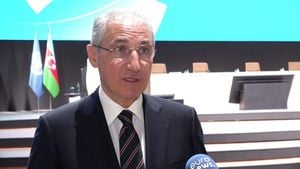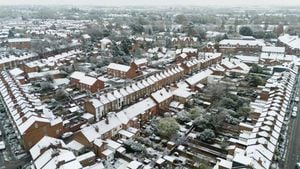New York City is making headlines as the Metropolitan Transportation Authority (MTA) board voted recently to implement the long-discussed congestion pricing plan. Approved with minimal dissent, the board's decision paves the way for the state’s first congestion pricing program, aiming to ease traffic and raise revenue for public transit improvements. The plan sets the base toll for cars entering Manhattan below 60th Street at $9, significantly less than the previously proposed $15 charge. With this approved toll system, the MTA hopes to eventually generate upwards of $15 billion to fund various infrastructure projects.
The approval of the congestion pricing plan marks the end of months of uncertainty. Governor Kathy Hochul initially stalled the plan back in June citing concerns about the financial burden on working New Yorkers, but the recently announced updates have revived momentum. "I made the decision to put the congestion pricing program on pause to come back with a different path forward," Governor Hochul stated during her announcement.
The new toll will be phased, increasing to $12 by 2028 and $15 by 2031. This step, echoed by MTA Chairman Janno Lieber, is integral for addressing the city’s overwhelmed public transport infrastructure, which desperately requires investment. "If we can save even 10 or 20 minutes by reducing the congestion on our streets, that's worth it for both drivers and transit users," Lieber noted.
Under the plan, drivers will begin facing the new toll structure starting January 5, 2025, with electronic license plate readers set up to streamline the toll collection process. While contributing to the congestion issue, the plan aims not just at alleviating traffic but also reducing air pollution. London and Singapore are notable global cities already reaping the benefits of similar initiatives. Advocates celebrate these efforts, encouraging public transit use and hoping to shift the commuting culture permanently.
Public reaction has been mixed. Some city and transport advocates argue the plan is necessary for generating funds for enhancing public transit options. For example, the MTA's plans include purchasing 270 electric buses, upgrading signal systems, and continuing work on various subway projects. Although the base toll will help finance improvement efforts, critics warn the increase could disproportionately impact working-class commuters who may not have flexible options for travel.
The approval catalyzed opposition from some local leaders, particularly from Long Island. Local town supervisors have voiced their concerns, claiming the toll will harm those who do not have the luxury of public transit, especially those with hour irregular work schedules or those who live far from train stations. Hempstead Town Supervisor Donald Clavin expressed, "The people who have to drive to the city are not the titans of industry; they are hard-working individuals trying to make ends meet. This will overburden them even more." Opposition voices are rallying to pressure federal representatives to reconsider or halt the implementation.
MTA’s recent decisions come at a time when New Yorkers could use more financial breathing room following years of pandemic-related economic strain. The toll increase is framed as part of long-term solutions for the city's public transport woes, yet the immediate costs for daily commuters could be substantial, potentially amounting to thousands over the course of years. While some drivers may embrace the prospect of less crowded streets, others fear they may be paying dearly for what could amount to minimal relief.
After the vote on Monday, the MTA will now enter the next phase of public education efforts about the new pricing scheme. The campaign will clarify how the toll works and inform drivers what they can expect when venturing beyond 60th Street. Various exemptions will apply, including for emergency vehicles, buses, and transportation services catering to the elderly, disabled, or those medically advised against using mass transit. The MTA’s outreach aims to smooth the transition for both drivers and transit users alike.
The congestion pricing program not only plays a pivotal role for the MTA’s future funding but also serves as a litmus test for how urban centers across the nation manage increasing traffic and environmental challenges. It highlights the complex relationship cities have with transportation and the continuing struggle to balance infrastructure demands with economic realities. With the MTA's vote, New York City steps onto the global stage of urban transit reform, where the very fabric of the community’s commute is at stake.



